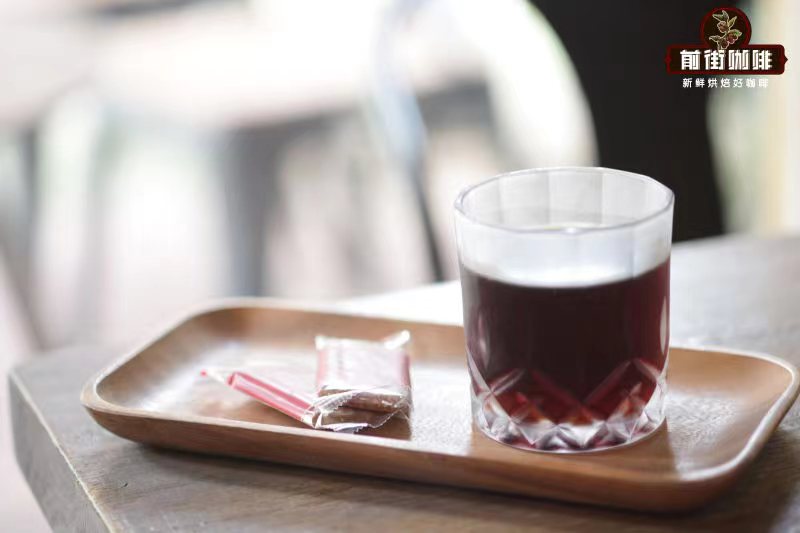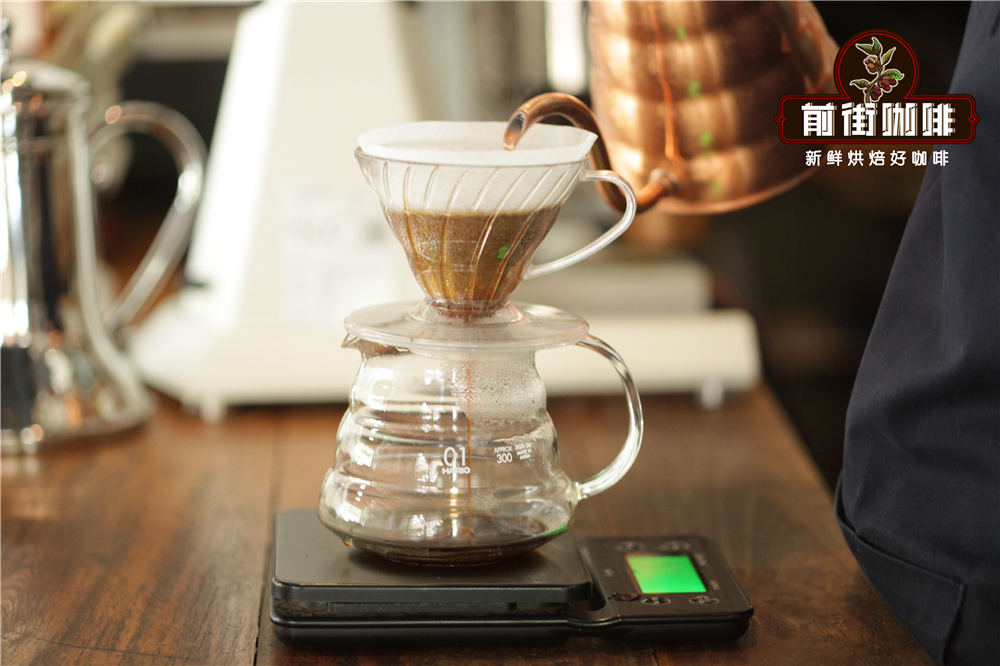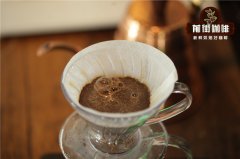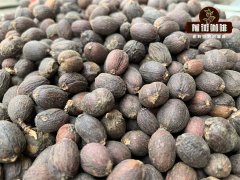How to handle the thickness of coffee grinding? The most important thing before coffee extraction and brewing
No matter what brewing tool you use to extract coffee, you must go through this stage of coffee grinding before brewing.
In order to make the flavor and aroma of coffee beans dissolve smoothly, it is necessary to expand the surface area of the extraction part to reduce the penetration distance. The smaller the grinding particles are, the larger the cut surface area is, and the shorter the penetration distance is. The time for substances to be dissolved will also be shorter, but the time for contact with air will be longer.
Coffee extract, and coffee powder thickness
When coffee beans are ground into a millimeter or so, there are more than 8,000 cells in them, and all substances produced during planting, post-processing, baking and even grinding are stored in these cells. Each process causes tiny cracks in the cells and naturally generated holes in the cell wall, although it will lead to the gradual loss of stored substances, but it is also because of these holes that form the basis for the production of flavor and aroma during extraction.
For example, if the size of a cooked coffee bean falls at six millimeters, each gram of cooked coffee beans will have about six grains, and the total surface area of each gram will be about eight square centimeters. If you cut the coffee beans to about three millimeters, there will be about 48 grains per gram, that is, each gram will increase the number of particles by 42, with a total surface area of about 16 square centimeters.

The grinding size of espresso takes 0.38 as an example, the number of particles per gram is about 24572 parts, the number of particles added per gram is 21500 parts, and the total surface area is 128square centimeters. What about hand-made coffee? The grinding size of hand-brewed coffee is about one millimeter, and the average number of particles per gram falls at 1296 portions, an increase of 912 servings per gram compared with cooked coffee beans, with a total surface area of 48 square centimeters.
The smaller the grinding size and the larger the extraction surface area, although more flavor can be extracted, too small grinding degree may also extract too much bitterness and miscellaneous flavor; the larger the grinding size and the smaller the extraction surface area, although it can slow down the formation of bitterness and miscellaneous flavor, however, too much grinding may make the essential flavor of coffee beans impossible to extract at all. Grinding out appropriate and uniform particles is the foundation to determine the extraction quality, which can extract harmonious flavor and aroma.
Coffee brewing method, and coffee grinding thickness
The focus of grinding is on uniform size (pursuing the minimum amount of fine coffee powder), adjusting to the appropriate particle size, reducing the heat energy caused by knife head friction, and reducing the time of exposure to oxygen. In order to achieve the most suitable extraction state, it is necessary to adjust the most suitable grinding size according to their own purpose (coffee bean characteristics, cooking utensils, drinkers' habits and preferences). The reason why baristas need to constantly test drinking and micro-adjust the bean grinder to facilitate flavor correction is that even if they use the same bean grinder It will also produce different degrees of grinding particles and grinding state because of different raw material conditions (coffee beans), daily temperature and humidity changes, baking time, and busy period knife head may be overheated and other factors.

Coffee beans with different roasting degrees will also produce different grinding states. The deeper the roasting degree is, the lighter the weight of a single bean is, and its density is different from that of shallow roasting beans. Therefore, under the same weight, there will be more deep roasted beans than shallow roasted beans.
Nowadays, there are a variety of cooking utensils in response to different extraction methods, the solubility of aromatic substances and flavor components are different, so different extraction methods will cause different flavor feelings and taste structures. Although the more aromatic substances are extracted, the better, but if the taste is squeezed in large quantities, it may result in too much bitterness and miscellaneous taste that the drinker cannot bear.
Important Notice :
前街咖啡 FrontStreet Coffee has moved to new addredd:
FrontStreet Coffee Address: 315,Donghua East Road,GuangZhou
Tel:020 38364473
- Prev

How to distinguish the insufficient extraction of hand-brewed coffee? What happens to coffee over-extraction and perfect extraction?
When it comes to coffee extraction, do you know what the flavor of coffee will be different at different extraction stages? Qianjie coffee is often mentioned about the taste of coffee extracted successively. When extracting coffee, the first flavor extracted is acidity, the second is sweet nutty taste, and finally it brings out the strong taste of bitter chocolate. Excessive extraction is bitter.
- Next

The difference between coffee and wine aroma tanning method and traditional tanning method can alcoholic aroma solarization also make a difference?
In recent years, innovative and innovative treatments have emerged one after another. in addition to all kinds of honey treatment, there are also many ways to improve the sun and washing. This time Qianjie Coffee has come to unveil the mystery of wine-scented sun treatment. What is the difference between the wine-scented sun and the traditional sun? What is the difference between wine tanning and oak barrel fermentation? Boutique manor a hundred schools of thought contend, contend for the wind,
Related
- What brand of black coffee is the most authentic and delicious? what are the characteristics of the flavor of the authentic Rose Summer Black Coffee?
- Introduction to the principle and characteristics of the correct use of mocha pot A detailed course of mocha pot brewing coffee is described in five steps.
- Which is better, decaf or regular coffee? how is decaf made?
- How much is a bag of four cat coffee?
- How about four Cat Coffee or Nestle Coffee? why is it a cheap scam?
- Which is better, Yunnan four Cats Coffee or Nestle Coffee? How about cat coffee? is it a fake scam? why is it so cheap?
- How about Cat Coffee? what grade is a hoax? which instant coffee tastes better, four Cat Coffee, Nestle Coffee or G7 coffee?
- Process flow chart of coffee making-Starbucks coffee making process what coffee tastes good at Starbucks
- The top ten best coffee beans in the world Rose summer coffee or Tanzanian coffee tastes good
- Yunnan four cat coffee is good to drink?_four cat coffee is a big brand? four cat blue mountain coffee is fake?

